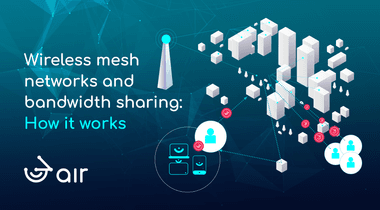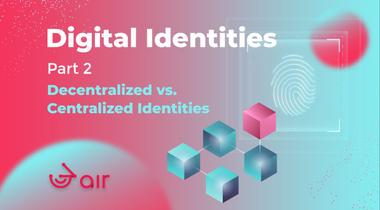Table Of Contents
One of the many ways that connectivity throughout African nations can improve is with enhanced public access points. Public access to WiFi networks in places like shopping malls, restaurants, bus and train stations and other public areas can help the general public stay connected with affordable access to the internet. However, a lack of widespread infrastructure—especially in rural areas—makes it challenging to distribute public networks and bandwidth access on a large scale.
3air and K3 are working to solve this issue with shared bandwidth opportunities like wireless mesh networks, which expand the geographic area that a network can cover through shared bandwidth. Wireless mesh networks are a group of two or more nodes that connect to a larger router to enhance the coverage from one router by sharing bandwidth across the entire area covered by those nodes.
In your home, for example, a mesh network can expand the coverage of your WiFi router to eliminate dead spots and assure a clear, fast connection throughout your entire home. On a wider scale, wireless mesh networks can improve coverage to a larger geographic area to offer wireless connectivity without having to build more routers and create new networks.
How do Wireless Mesh Networks work?
Mesh networks enhance connectivity across an area by using two or more nodes to connect to a central router. The central router can provide connectivity, but only so far. Mesh network devices create a blanket of connectivity by expanding the coverage between three or more points—the first node, the second node, the central router and so on. More wireless mesh networks can expand the area of coverage to a wider area without having to set up more routers, making it easier to provide connectivity to a large area such as a shopping mall or train station.
Advantages of using wireless mesh networks
Wireless mesh networks provide connectivity by receiving and forwarding data, sending a stream of data through the entire mesh throughout the connectivity area. The more mesh nodes there are, the wider the area of connectivity can be. Typical mesh networks, such as those you would find in your home, can cover up to around 1,700 square meters of an area with enhanced coverage.
Mesh networks increase network efficiency by enabling wider access to connectivity under just one router. Before mesh networks, problems with dead zones or areas that would need access under an area greater than the available connectivity would mean that you would need to set up several routers in one space. This can be costly, as it requires setting up several networks within one area. At a train station for example, users would have to jump from one network to the next if they were to move across the station. Mesh networks enable users to connect to just one network and experience the same level of connectivity regardless of where they are in that area.
This makes it easy to change the size or area of a network and to customize a network to fit your own needs. In a shopping mall, for example, you can easily create specific areas of coverage to allow users an optimized connectivity experience only in the areas that the network is needed. To create a bigger or smaller network, all you need to do is add or remove nodes in specific places that you want the network to appear.
Disadvantages of wireless mesh networks
While wireless mesh networks enable widespread connectivity across a large area, they can be somewhat complex . One central router will send and receive information from the nodes in the mesh network, acting as a central computer enabling access between the entire network and the internet. Bandwidth sharing offers easier access to connectivity, but means that the network can be slowed down or congested if too many people are trying to access one router through a mesh network.
How 3air and K3 solve these issues
Blockchain technology solves a lot of the issues that face bandwidth sharing platforms and services, mostly because they incentivize users to behave well and honestly with financial rewards. Access point providers are given a financial reward for providing bandwidth sharing opportunities, and the permissionless and transparent nature of the network allows for seamless connectivity.
Both parties are incentivized with financial rewards, limiting dishonest use of the network or broadband sharing platform. Users are able to easily access 3air and K3 networks through the SKALE blockchain, preventing issues with local regulators that might want an authentication process in place on a public network. Among users that are not 3air customers, temporary voucher codes will also be available.
3air’s unique incentive program enables widespread broadband connectivity through use of blockchain technology. Wireless mesh networks create a pathway for widespread access to broadband connectivity, while blockchain enables fair and easy access to end users while adhering to ISP terms and conditions as well as local regulations through financial incentives. You can learn more about the specifics of the financial incentives offered through 3air connectivity here.
###Follow us on social media
Twitter: https://twitter.com/3aircrypto
Telegram: https://t.me/my3air
Discord: https://discord.com/invite/3air
TikTok: https://www.tiktok.com/@3aircrypto
Instagram: https://www.instagram.com/3air.crypto/
LinkedIn: https://www.linkedin.com/company/3air-crypto/
Medium: https://medium.com/@3air
Facebook: https://www.facebook.com/3aircrypto










